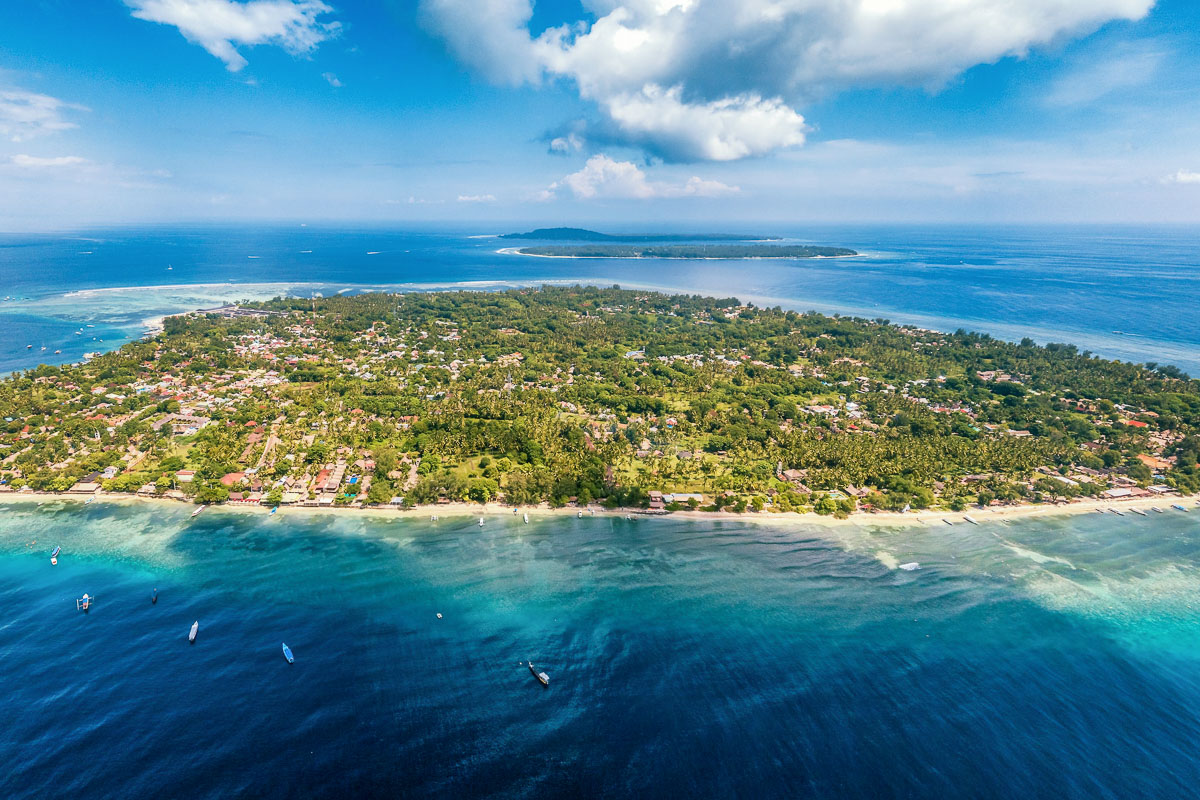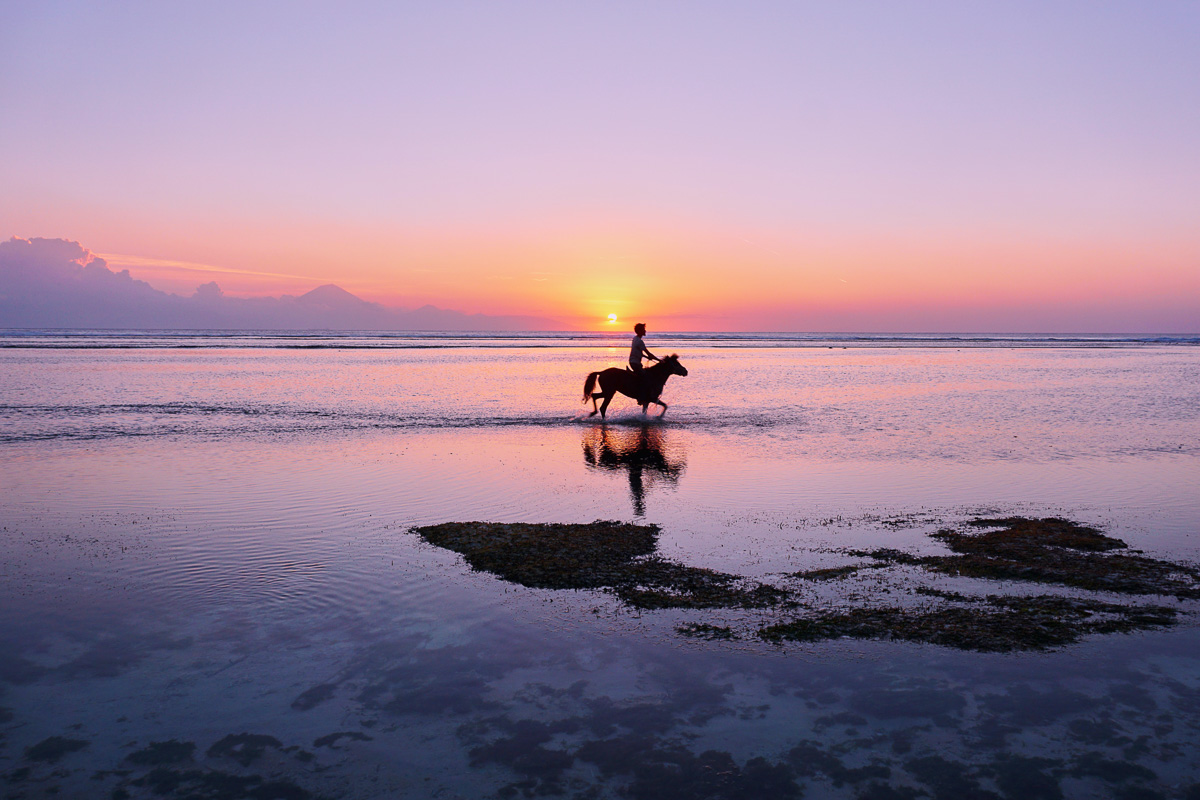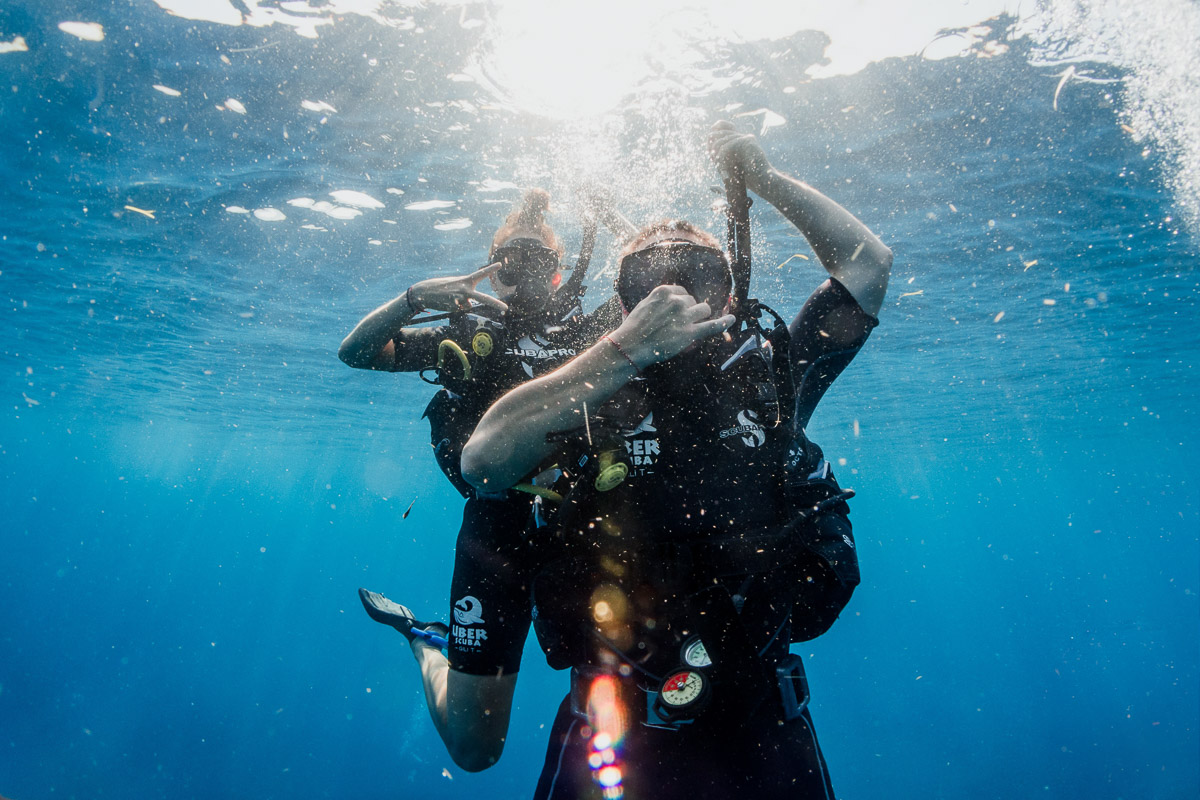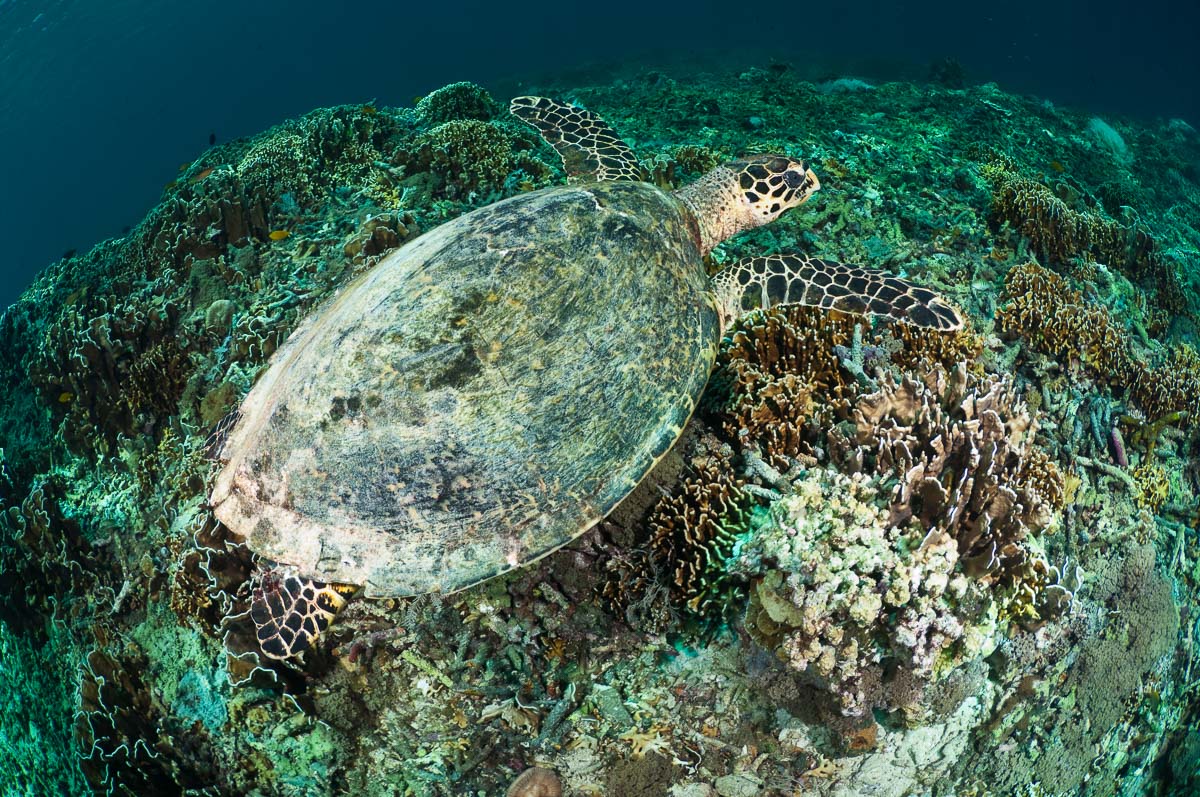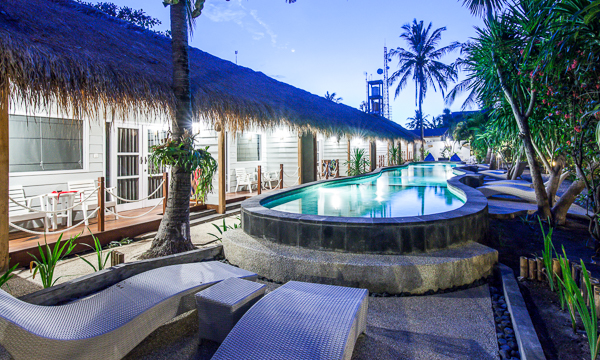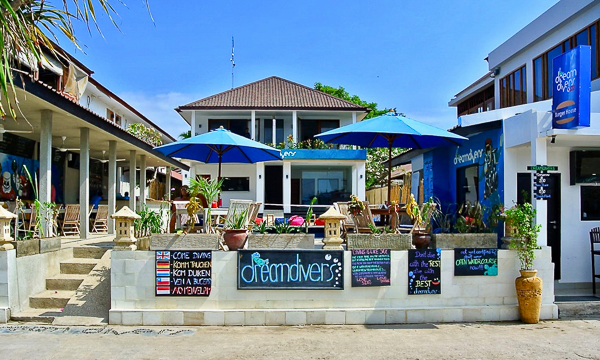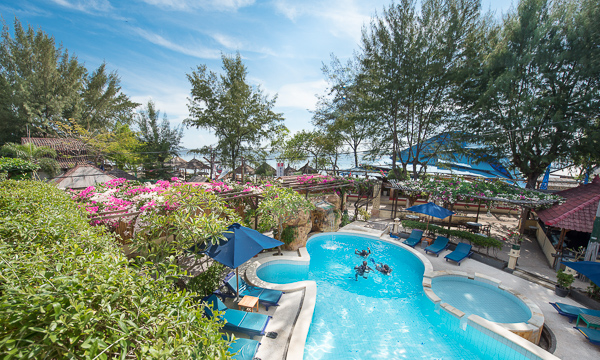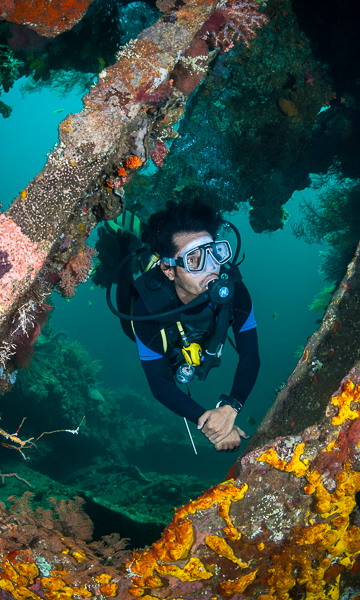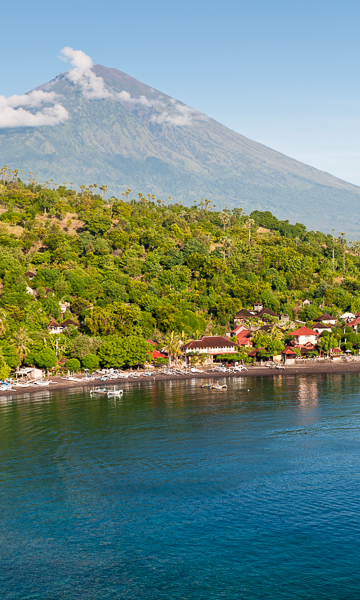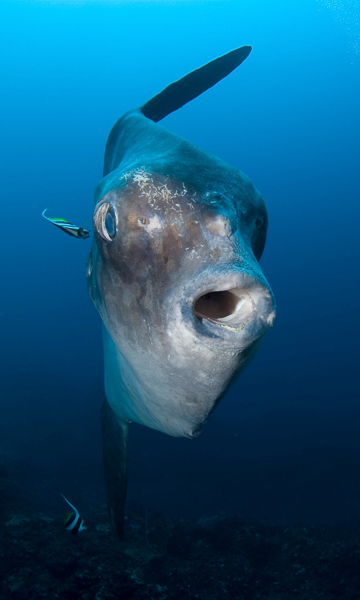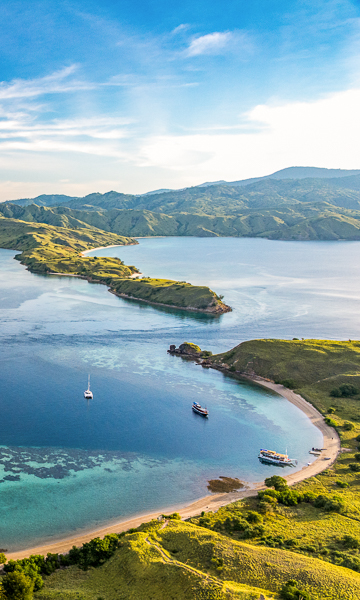
Scuba diving in
Gili IslandsHighlights
- Great visibility and easy conditions
- Encounter turtles, reef sharks, cuttlefish and even mantas
- Complete your Open Water course, or advance your skills
- Ideal destination for divers with families
Gili Islands are well-known for offering laid-back diving conditions and carefree lifestyles, and for years, have lured backpackers, divers and beach-lovers alike, drawn by the promise of that perfect paradise experience. Known collectively as the Gilis, the three islands of Gili Air, Gili Meno, and Gili Trawangan lie off the north-west coast of Lombok. Each island has its own individual charm, but all offer a relaxing atmosphere, incredible scenery and relaxing diving for beginners and more advanced divers alike.
Diving the Gili Islands
- SharksYear round
- TurtlesYear round
- Schooling reef fishYear round
- TrevallyYear round
- Giant frogfishYear round
- Plentiful reef lifeYear round
- Artificial reefsYear round
All three of the Gili Islands are ringed by sloping coral reefs turning to sand or rubble at around 25m+. Some sites also offer deeper channels separated by coral ridges and there are several isolated pinnacles further away from the islands. Rather than reefs with abundant fish life, it is the friendly turtles, large cuttlefish, and regular sighting of black and whitetip reef sharks that make the islands special for divers. There are also several Biorock artificial reefs dotted around the islands. Hawksbill and green turtles are the highlight of diving in the Gili Islands and can be seen on almost all dive sites. In fact, there are a few dive sites, such as Turtle Heaven, where sightings are more or less guaranteed.
The Gili Islands’ are certainly not muck diving destinations, but if you spend some time searching you’re sure to find a critter or two. Giant frogfish and nudibranchs are reasonably common, whilst ghost pipefish, leaf scorpionfish, blue-ringed octopuses, and even pygmy seahorses can occasionally be found. It is also just a 25-minute boat journey from The Gili Islands to the muck diving sites on Lombok including Mentigi Bay and Teluk Nara.
Open Water diving course in the Gili Islands
The Gili Islands provide the perfect conditions for taking a diving course. With warm seas, gentle currents, and short boat rides, learning to dive in the Gilis is a fun and relaxing experience. Diving courses also cost the same throughout the Gili Islands, so you can focus on finding the perfect dive centre without worrying about the price.
Diving Environment
Reef, learning
Beginner upwards
All year round
5 - 30m
10 - 25m
27 - 29c
Top tips
- Hiring a bike is the perfect way to explore whatever island you are staying on.
- Make sure to dive on the Biorock structures - they offer a unique chance to see reef restoration in action.
- The best sunset views are from the western side of Gili Trawangan where Bali’s Mt Agung dominates the horizon.
- Although not well known for their ‘macro’ life, keep an eye open and you may well be surprised at what you can find when diving around the Gilis!
- The weather might not be the the best, but the rainy season offers the best chance to dive with manta rays.
About the Gili Islands, Indonesia
Situated off the northwest coast of Lombok, the Gili Islands are considered by many to be the perfect tropical getaways. All three islands boast that perfect mix of white sand beaches, coconut palms and beautiful, inviting sea. But each island also has its own unique charm. Gili Trawangan was the first to be discovered by tourists and features vibrant bustling nightlife. Gili Meno offers peace, isolation and romance. And Gili Air sits somewhere between the two with an interesting mixture of modern tourism and traditional Indonesian life.
Life in the Gili Islands move at a slow pace, with no motorised vehicles and a laid-back island vibe. But visitors can find a variety of activities beyond diving. Why not watch the sunrise and sunset behind dramatic volcanoes or grab a bike and search for the many boutique cafes nestled amongst the palm groves. Cooking classes, yoga, relaxing spas, snorkelling, fishing and stand-up paddle boarding are also easy to find.
Where to stay in the Gili Islands
The Gili Islands first found fame in the 1980s and 90s as a popular stop on the Southeast Asia backpacker trail. Today, there is a huge range of different accommodation options - from funky backpacker hostels and tiny homestays, to boutique villas and luxurious resorts. Visitors will find lots of dive resorts on Gili Air and Gili Trawangan. Gili Meno features slightly fewer options. All three Gili Islands offer access to the exact same dive sites, so where you stay depends on what you enjoy on land.
Gili Air is a low-key destination with a sprawling ramshackle village and tons of charm. The large local population on Gili Air keeps the nightlife within limits but the beach areas still buzz with live music every evening. Gili Meno is a quiet island dotted with small resorts and homestays. There is little in the way of a village here, but plenty of lush tropical gardens and beautiful settings to enjoy the peace and tranquility. Gili Trawangan, often known as Gili T, is a bustling island known its vibrant nightlife. On its eastern coast, Gili Trawangan boasts a strip of bars, restaurants and a tasty local food market. Slightly quieter strips of beach can be found on the north and west sides of the island.
Getting to the Gili Islands
The best way to reach the Gili Islands’ dream-like diving is from Bali, using one of the many private transfer boats that run regular daily schedules. Alternatively, visitors can use the public ferry that runs between Bali and Lombok. It is also possible to fly to Lombok and make the transfer by road. Given the ease and cost, the transfer boats from Bali are by far the best option. Resorts can also arrange transfers. There are no motorised vehicles on the Gili Islands.
Gili Island's diving season and weather
Due to their warm climate and sheltered location, you can enjoy the Gili Islands’ diving year round. July to September and December to January are the busiest seasons and much of the accommodation gets booked well in advance. April to June in the Gili Islands is hot and dry with great diving conditions. The rains arrive between December and February, which means lots of plankton and lower visibility. Generally, the visibility around the Gili Islands is 15-25m+ in the mornings, and a little less as the winds pick up later in the day. In the rainy season this drops to 10-15m, but can be worse with tidal changes and algal blooms.
